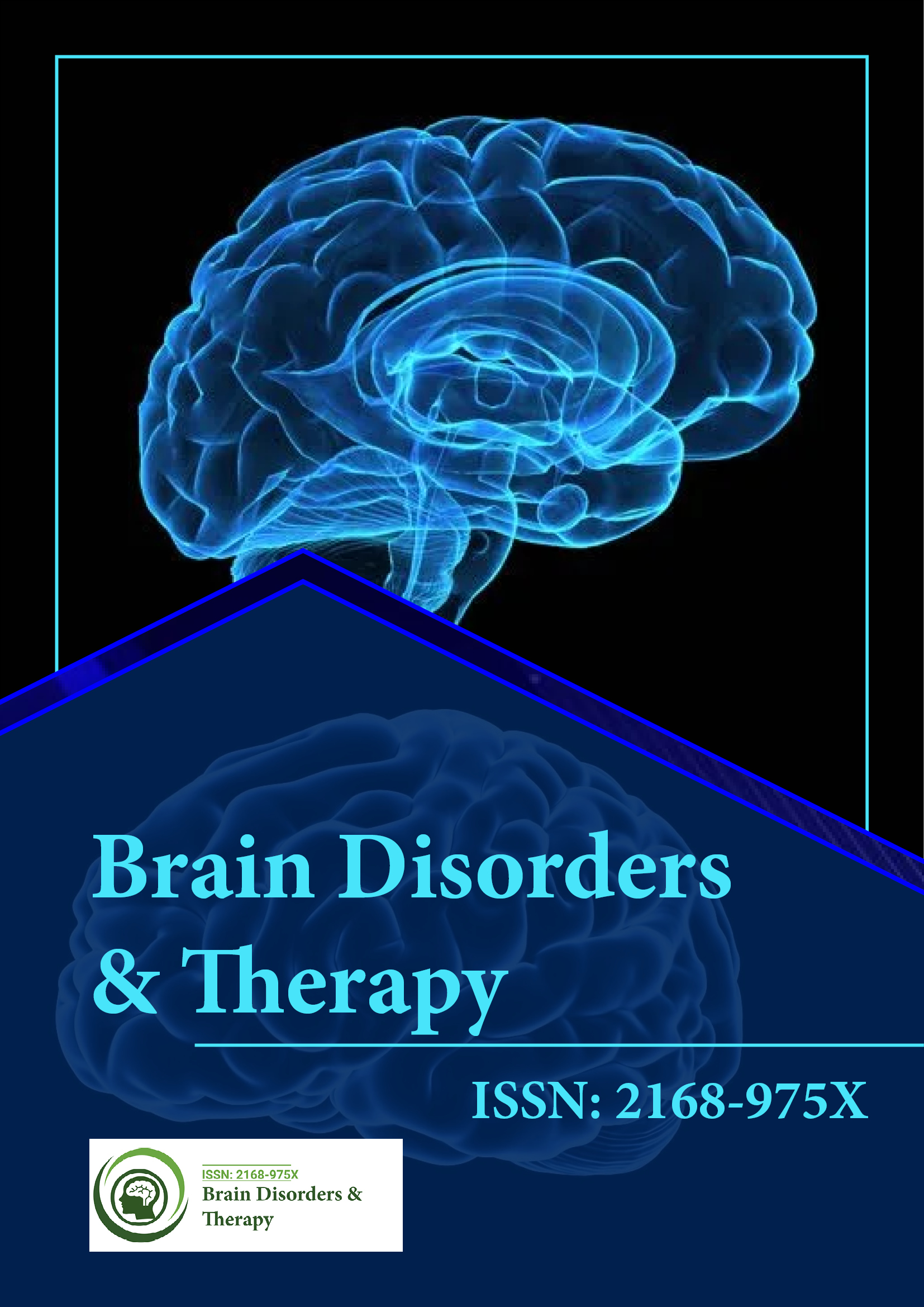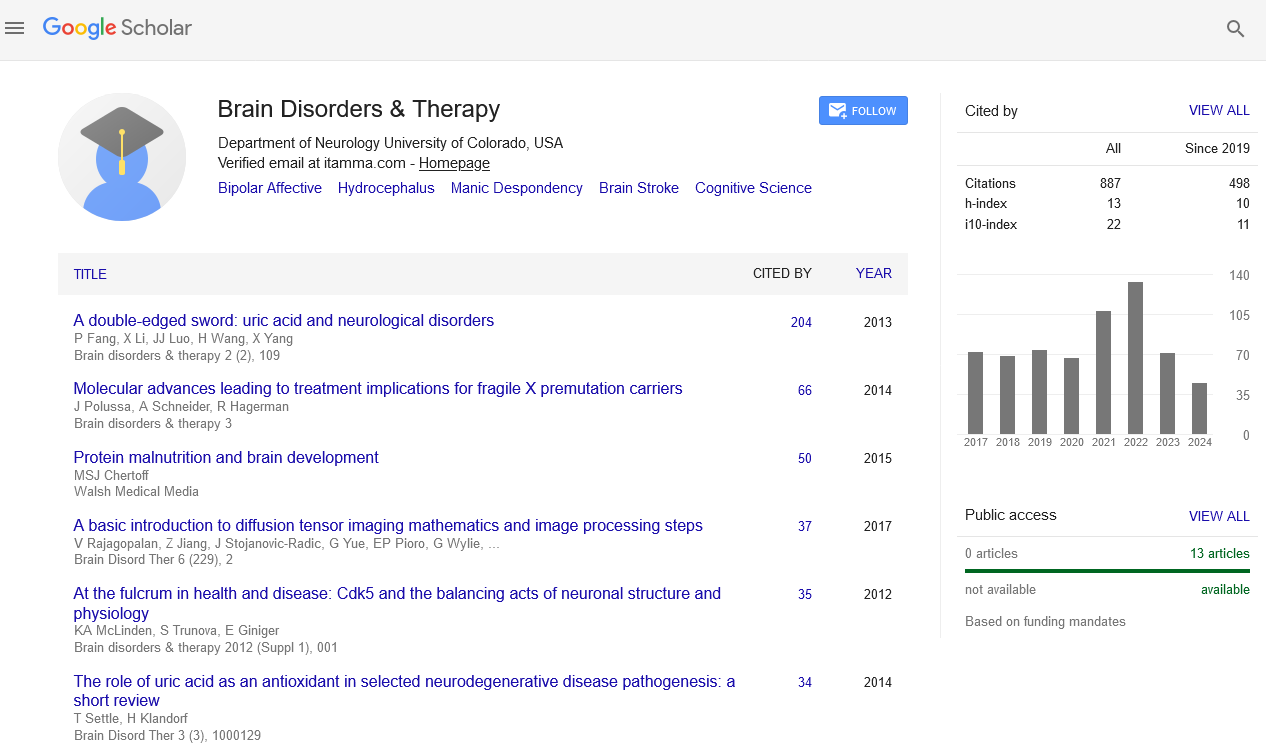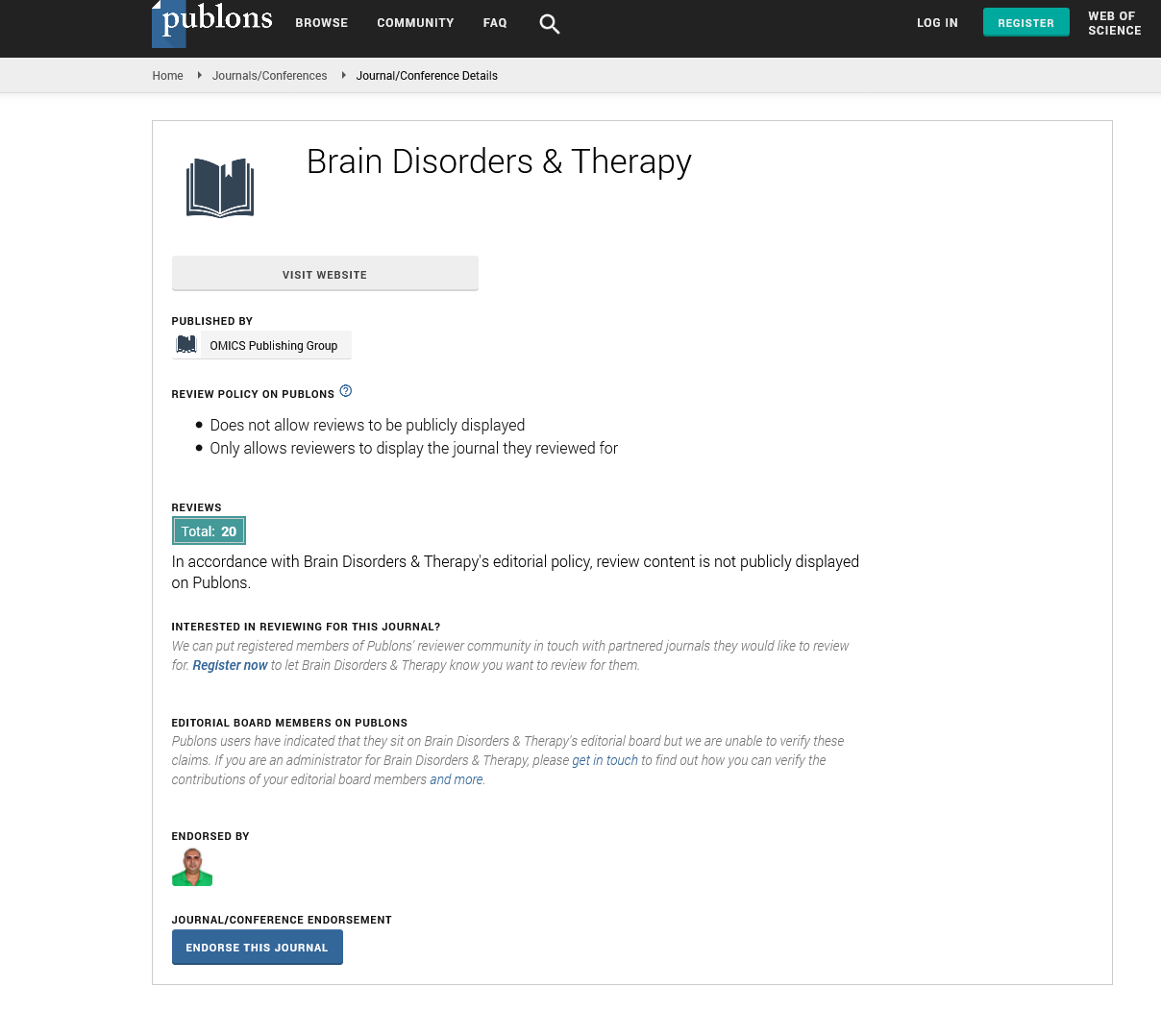Indexed In
- Open J Gate
- Genamics JournalSeek
- JournalTOCs
- RefSeek
- Hamdard University
- EBSCO A-Z
- OCLC- WorldCat
- Publons
- Geneva Foundation for Medical Education and Research
Useful Links
Share This Page
Journal Flyer

Open Access Journals
- Agri and Aquaculture
- Biochemistry
- Bioinformatics & Systems Biology
- Business & Management
- Chemistry
- Clinical Sciences
- Engineering
- Food & Nutrition
- General Science
- Genetics & Molecular Biology
- Immunology & Microbiology
- Medical Sciences
- Neuroscience & Psychology
- Nursing & Health Care
- Pharmaceutical Sciences
Cerebral vascular signal transduction: A novel strategy to treat Stroke
Global Summit on Stroke
August 03-05, 2015 Birmingham, UK
Saema Ansar
Scientific Tracks Abstracts: Brain Disord Ther
Abstract:
Stroke accounts for 1.1 million deaths and is the foremost cause of disability in EU. It is an enormous economic, clinical and
social burden; so far therapeutic options are limited. It is clear that new strategies are needed given the disappointing lack of
success of the enormous research effort focused on potential neuroprotective agents. Unfortunately, all neuroprotective agents
have failed to show any beneficial activity in patients with stroke. Stroke is first and foremost a vascular disease and our unique
focus is on stroke-related responses of the vascular wall. This represents a paradigm shift in approach which is generating
promising results. We recently discovered that inhibition of the MEK signaling pathway in the cerebral vasculature improves
acute outcome in all types of experimental stroke. These exciting initial findings are propelling our current research program.
To successfully develop our novel treatment strategy, we need to more fully understand the consequences of MEK inhibition
on stroke outcome. Whether the benefits of early treatment with MEK1/2 inhibitors persist beyond the sub-acute phase and
not negatively interfere with later recovery processes is not known. Therefore, the aim of this study was to determine the
post-stroke consequences of MEK inhibition over extended time periods. Acute treatment with a specific MEK1/2 inhibitor
U0126 significantly improved long-term functional recovery, reduced infarct size and promotes neurovascular protection and
angiogenesis. These results provide new insights of using this treatment and are therefore a promising strategy for stroke.
Biography :
Saema Ansar has completed her PhD at Lund University, Sweden in 2007 and has performed two Post-doctoral studies one at Department of Neurology at
Heidelberg University, Germany and one at Glostrup Research Institute, Copenhagen University, Denmark. She has well-recognized experience in the field of
stroke, vascular research, pharmacology, drug delivery and advanced imaging technology such as MRI. She has outstanding research management, team-leader
and supervision skills and has supervised more than 15 graduate and undergraduate students. She has published more than 22 papers in reputed journals and 30
abstracts in international conferences.


